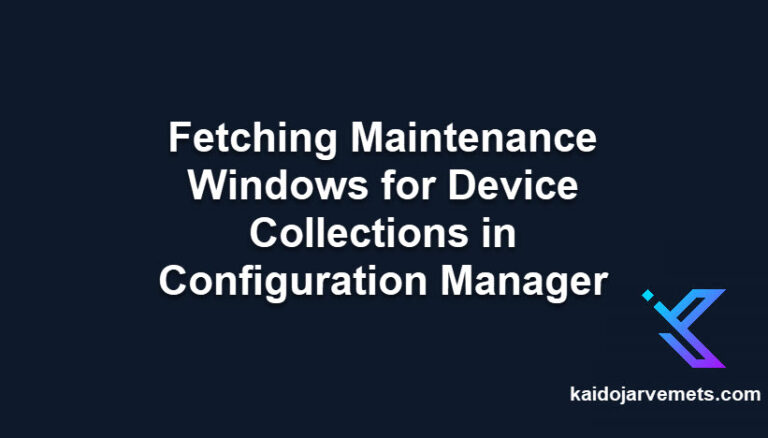Introduction
As a Microsoft MVP specializing in Azure security, I’ve seen firsthand how regular cybersecurity audits strengthen an organization’s defense against specific, current threats. These audits consistently reveal hidden vulnerabilities, outdated practices, and potential compliance issues that could otherwise lead to serious breaches. In this post, we’ll explore the critical role of security audits in Azure environments, examining how tools like Microsoft Sentinel and Microsoft Defender for Cloud can significantly enhance your security posture through early threat detection, automated responses, and comprehensive visibility across your Azure resources.
Understanding Cybersecurity Audits in Azure
A cybersecurity audit in Azure is a comprehensive examination of your cloud infrastructure, policies, and practices. This process goes beyond a simple checklist; it’s a deep dive into every aspect of your Azure environment that could impact your security posture.
A thorough Azure cybersecurity audit involves:
- Evaluating Azure network security settings
- Assessing data protection measures and azure data encryption
- Reviewing Azure RBAC (Role-Based Access Control) policies
- Reviewing Azure Policies, Subscriptions and Management Groups
- Reviewing Microsoft Entra Security Services (Entra ID, PIM, Conditional Access etc.)
- Checking compliance with relevant regulations
- Identifying potential vulnerabilities in Azure resources
Key Components of an Azure Security Audit
1. Risk Assessment
Start your audit with a thorough risk assessment. Use Microsoft Defender for Cloud (formerly Azure Security Center) to gain insights into your security posture and identify potential threats.
2. Vulnerability Scanning
Leverage built-in vulnerability scanning tools to identify weaknesses in your Azure infrastructure. Microsoft Defender for Cloud provides continuous scanning capabilities to help you stay ahead of potential threats.
3. Azure Compliance Check
Ensure your Azure environment adheres to industry standards and regulations. Azure offers various compliance offerings, and regular audits help maintain these standards.
4. Microsoft Entra Security Services Review
Assess the implementation and effectiveness of Microsoft Entra security services, including Entra ID, Privileged Identity Management (PIM), and Conditional Access policies. Verify that these services are configured correctly.
5. Network Security Assessment
Evaluate your Azure network security configuration, including firewalls, subnets, and network security groups.
6. Data Protection and Encryption Audit
Review your data protection measures, including azure data encryption practices for data at rest and in transit.
7. Azure Policies, Subscriptions, and Management Groups Assessment
Evaluate the structure and configuration of your Azure Policies, Subscriptions, and Management Groups. Ensure they align with your organization’s governance and compliance requirements.
Enhancing Security with Advanced Threat Detection and Response
While regular security audits are key, implementing advanced threat detection and response capabilities can greatly improve your Azure security posture. One notable tool in this area is Microsoft Sentinel, a cloud-native SIEM and SOAR solution. However, whether you’re using Microsoft Sentinel or considering other options, understanding the advantages of such systems is important for thorough security management.
Benefits of Advanced Security Information and Event Management (SIEM)
Regardless of the specific tool you choose, a good SIEM solution can provide:
- Centralized log management: Collect and analyze logs from various Azure services and resources in one place.
- AI-powered threat detection: Use machine learning algorithms to identify potential security threats quickly.
- Automated incident response: Set up automated workflows to respond to common security incidents promptly.
- Full visibility: Gain a complete view of your security posture across your entire Azure environment.
Microsoft Sentinel: An Azure-Native Option
For those considering or already using an Azure-native solution, Microsoft Sentinel offers these benefits with smooth integration into your Azure environment. It provides:
- Easy integration with Azure services and Microsoft 365
- Built-in connectors for many third-party solutions
- AI-driven threat intelligence specific to Azure environments
- Customizable analytics rules and automation playbooks
Whether you choose Microsoft Sentinel or another SIEM solution, adding advanced threat detection and response capabilities to your security strategy can strengthen your overall security posture and complement your regular security audits.
Azure Security Best Practices
To maintain a strong security posture between audits, follow these azure security best practices:
- Implement least-privilege access using Azure RBAC & Entra Privileged Identity Management
- Enable Multi-Factor Authentication (MFA) for all users
- Regularly update and patch all systems and applications
- Use Azure Policy to enforce organizational standards
- Implement network segmentation and use Azure Firewall
- Enable azure threat protection features in Microsoft Defender for Cloud
Conducting an Effective Azure Security Audit
When performing a security audit in your Azure environment, consider these steps:
- Define the scope of the audit
- Clearly outline which Azure resources, services, and environments will be included in the audit.
- Identify key stakeholders and their roles in the audit process.
- Conduct a risk assessment
- Identify potential threats and vulnerabilities specific to your Azure environment.
- Evaluate the potential impact of these risks on your organization.
- Perform audit using Microsoft Defender for Cloud
- Utilize Microsoft Defender for Cloud’s built-in assessment tools to evaluate your Azure security posture.
- Review the secure score and recommendations provided by the platform.
- Review Azure security policies and procedures
- Examine existing Azure policies and ensure they align with your organization’s security requirements.
- Verify that security procedures are up-to-date and properly documented.
- Assess identity and access management
- Review Microsoft Entra ID configurations, including conditional access policies and multi-factor authentication settings.
- Evaluate Privileged Identity Management (PIM) implementation and usage.
- Check for proper implementation of the principle of least privilege across all Azure resources.
- Review deployed resources and their usage
- Analyze the inventory of all deployed Azure resources.
Assess resource configurations for security best practices. - Identify unused or underutilized resources that may pose unnecessary security risks.
- Verify that all resources are properly tagged and categorized for management and security purposes.
- Analyze the inventory of all deployed Azure resources.
- Assess employee awareness of Azure security best practices
- Evaluate the effectiveness of your security training programs.
- Identify areas where additional employee education may be necessary.
- Evaluate your incident response plan
- Review and test your incident response procedures for Azure-specific scenarios.
- Ensure that roles and responsibilities are clearly defined in the event of a security incident.
- Check compliance with relevant standards using Azure Policy
- Use Azure Policy to assess your environment against industry standards and regulatory requirements.
- Identify any compliance gaps and develop plans to address them.
- Analyze results and create an action plan
- Compile and prioritize the findings from your audit.
- Develop a detailed action plan to address identified issues, including timelines and responsible parties.
Remember, a cybersecurity audit is not a one-time event. To maintain strong security in your Azure environment, conduct these assessments regularly and act on the findings.
Conclusion
Regular cybersecurity audits are key to maintaining a strong Azure security posture. By using tools like Microsoft Sentinel and Microsoft Defender for Cloud, and following Azure security best practices, organizations can significantly improve their cloud security.
Proactive measures make a difference. Implement regular cybersecurity audits in your Azure environment to identify and address potential vulnerabilities before they become issues. These audits help ensure your defenses are current and effective against the latest security challenges.
Remember, security is an ongoing process. Stay informed about the latest Azure security features and continuously refine your practices based on audit findings.
If you need help conducting a thorough Azure security audit or want to discuss improving your cloud security posture, don’t hesitate to reach out. Your organization’s security in the cloud is too important to leave to chance.








